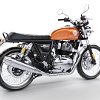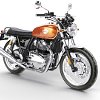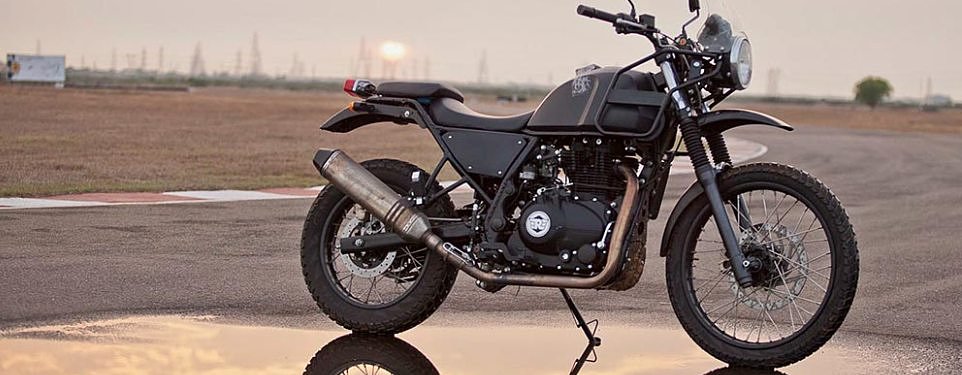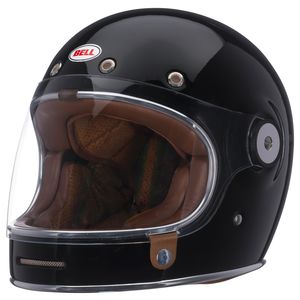Say the name Royal Enfield, and many motorcyclists will wax poetic about fond memories of riding a Bullet from the 1950s, '60s, or even the '90s, or perhaps inheriting a Constellation from their father (or grandfather). Established in 1901, Royal Enfield claims to be the longest running motorcycle company; the Bullet is supposedly the longest produced motorcycle model in history.
More recently, Royal Enfield made a stir in the U.S. market by introducing the Himalayan, and it’s clear that was only the start of Eicher Motors’ plans to insert Royal Enfield back into modern-day motorcycle conversations. The latest additions to their stable are the Continental GT 650 and Interceptor 650.

True to their brand, Royal Enfield gave both the Continental GT and Interceptor a very classic look, with slightly different personalities. They both sport a round headlight, twin dial gauges, exposed frame, spoked wheels, and dual reverse megaphone exhaust. The main difference between the two models is the ergonomic setup. The Continental GT has café racer clip-on handlebars, rearset foot controls, and a fuel tank carved for tucking knees in during more aggressive riding. In contrast, the Interceptor is more of a standard bike. The handlebars are upright, the flat, two-person seat is thicker and more comfortable, the foot pegs are positioned more directly under the rider’s knees, and the tank is a teardrop shape, with a gentle indent.

Both harken back to Royal Enfield’s heydays of the 1950s and '60s, but from different subcultures of the motorcycling world: the Continental GT for the café racer crowd, and the Interceptor for the everyday commuter, with possibilities to expand into scrambler territory. Aside from those few differences, everything else is the same: engine, tuning, chassis, suspension, wheels, exhaust, and gauges.
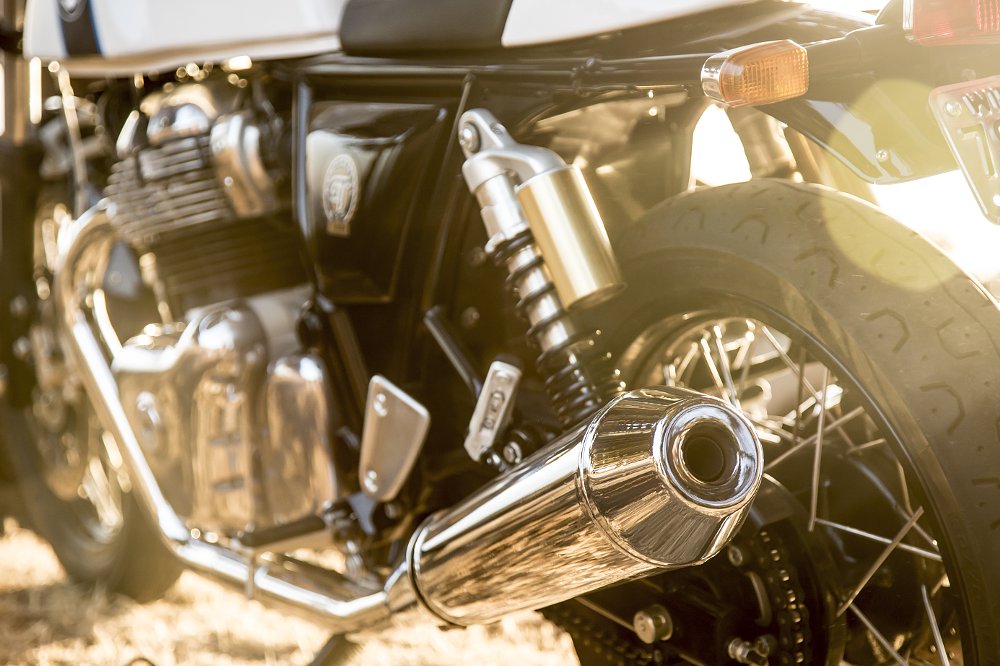

Speaking of power, Royal Enfield claims this new fuel-injected air/oil-cooled engine produces 47 horsepower, with 38 foot-pounds of torque. What does that translate to in real world riding? Surprisingly, it’s plenty of power to have fun, as we discovered ripping through the tight twisties in the Santa Cruz Mountains, weaving in and out of old redwoods towering hundreds of feet above us. Throttle response was smooth and linear. There was never a lag from twisting the right grip to moving forward, and it wasn’t so sensitive that it ever snapped my neck back or induced a whiskey throttle moment. Neither the Continental GT nor the Interceptor will win any top-speed races, but for the everyday rider, both of these new Enfields provide plenty of usable power for daily riding, plus a little extra for more spirited weekend rides.

While carving through the tight hairpins navigating us between the trees, I found myself shifting between second and third gear. Between 35 and 65 mph, I frequently found myself in fourth gear. With a six-speed transmission, both the GT and the Interceptor have tall gearing throughout the bottom four gears, but the steep torque curve still makes takeoff from a stop an easy move in first. When we were really railing at the end of the day down Highway 1, sixth gear (which some folks were appropriately referring to as overdrive) came in handy, allowing the engine to hum right along without so much as a hint of strain.
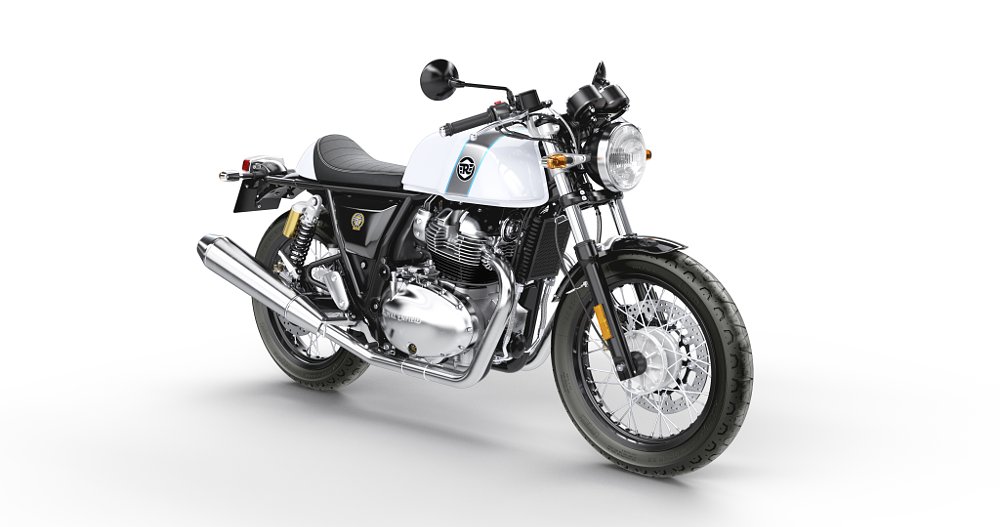
At one point, while sitting at a stoplight on the GT, I inadvertently shifted into first with my heel, since the rearset position of the GT’s foot pegs is so far back. I didn’t have any issues with the position of the shifter on the Interceptor. Aside from that, shifting was nearly effortless on both bikes. The slip-assist clutch felt light enough not to cause hand fatigue from a day of riding, and the shifter clicked from one gear to the next smoothly and without any false neutrals. Such an easy rider.

The seat height on the GT turns out to be half an inch lower than on the Interceptor, but I certainly didn’t notice the difference. With a 30-inch inseam, I wasn’t quite flat footed at a stop on either, but the relatively narrow width of the saddles allowed enough footing to feel secure. The reach to the clip-on handlebars of the Continental GT was more comfortable than I anticipated, as I have a shorter torso. Since the lower bars encourage a more leaned-forward riding stance, they were comfortably within reach, and my lower back wasn’t complaining. The Interceptor’s taller, wider handlebars actually felt like a longer reach, with the footpegs under my knees encouraging a more upright seating position. Here is where my shorter torso became more apparent. It was never a liability, but a noticable difference after riding the GT. The Interceptor’s wider handlebars gave a bit more leverage to flick back and forth through corners, but the overall more relaxed position of the bike had me in a more chill riding mindset. It’s cool, we’ll get there.

One of the many new components of the GT and the Interceptor is the frame, which is something Royal Enfield’s engineering and development department spent thousands of hours refining. Other riders who have had seat time on the previous single-cylinder 535 Continental commented often about how much more rigid this new frame is. Riding aggressively on the Continental revealed the chassis is well sorted, with little to no flex. Place the bike in the lane where you want to be and it stays planted. A welcome change from the previous models! Steering felt precise, though the GT’s clip-ons required a little more push of the handlebars to dip into corners than the Interceptor’s moto-style upright bars.
Working with the double-cradle frame are dual piggyback shocks that are preload adjustable to accommodate riders of varying weights. But there were times when we rode over sharp or quick bumps that the shocks left me feeling a little saddle sore. Other times, going through dips or bigger bumps, the front wallowed a bit, and the suspension felt soft. Chalk it up to rebound damping needing adjustment, and perhaps an upgrade on the fork.

Our ride on the surface streets of Santa Cruz and the winding roads of the seaside mountains provided plenty of opportunities to test the Continental’s and Interceptor’s Bybre brakes: A squirrel crossing our wooded path, a blind curve’s apex tightening unexpectedly, a surfer darting out in beachside traffic. A single disc up front provided adequate braking power, though the initial bite felt a little soft. But the Bosch ABS system, which comes standard, came in handy a few times when hard braking became necessary, both in town traffic and at the end of a straight before dipping into the next corner. Overall, it’s enough braking power to inspire confidence, even when riding more aggressively.

If the vintage style isn't enough to inspire love for the looks, Royal Enfield also created a full lineup of accessories for both of these bikes. From windscreens to handlebar pads, engine guards, exhaust, and bash plates, Royal Enfield created plenty of opportunities to dress up either a Continental GT or Interceptor with extra bits of flash and flair. A full lineup of apparel (apparently only available for men, at this point) is also part of Royal Enfield’s push to increase enthusiasm for these new models, and the brand as a whole. If you bleed RE, you’ll swoon over the selection.

Royal Enfield prices and warranty
So what will either of these bikes set you back? Surprisingly, not as much as their quality implies. The Interceptor starts at $5,799 for solid colors, such as “Mark Three” (gloss black), “Orange Crush,” and “Silver Spectre”; $5,999 for the multicolored paint scheme “Ravishing Red” (red and black), “Baker Express” (white and red); and $6,499 for “Glitter & Dust” (chrome). The Continental GT starts at $5,999 for the solid-colored “Ventura Blue”; $6,249 for the multicolored paint schemes “Black Magic” (black and gold), “Ice Queen” (white with a blue and silver stripe), and “Dr. Mayhem” (black and silver with a hi-viz stripe); and $6,749 for “Mister Clean” (chrome).

It's worth noting that these prices include a three-year warranty with roadside assistance, which implies the company has serious confidence in these machines. Many reader comments on Spurgeon's story on the Himalayan focused on questions of reliability, so the strong warranty suggests Royal Enfield has been listening to consumers. Both 650 twins should be available for sale in the states in the spring of 2019.

Royal Enfield didn’t state a specific demographic for the Continental GT 650 nor the Interceptor 650. There was no mention of Millennials or Baby Boomers, no target age range or income level. Eicher Motors’ CEO Siddhartha Lal made it clear that the aim of these two new twins in Royal Enfield’s lineup is not just to increase interest in Royal Enfield, but to increase interest in motorcycling itself. Give riders an affordable, charming, reliable bike that makes motorcycling simply about fun again.
With as much time, effort, research, development, engineering, fit and finish that has gone into both the new Continental GT 650 and the Interceptor 650, these bikes are a bargain. And with Rod Copes, president of Royal Enfield North America, claiming another 12 bikes will be released over the next three to five years, featuring two to three different engine platforms, Royal Enfield is out to be part of the larger movement to save motorcycling.

| 2019 Royal Enfield Continental GT and Interceptor | |
|---|---|
| Price (MSRP) | $5,799 to $6,749, depending on model and paint |
| Engine Type | Single overhead cam vertical twin |
| Displacement | 648 cc |
| Bore x stroke | 78 mm x 67.8 mm |
| Fuel management | Fuel injection |
| Power | 47 horsepower @ 7,250 rpm |
| Torque | 38 foot/pounds @ 5,250 rpm |
| Transmission | Six gears, chain final drive |
| Front Suspension | 41 mm fork, 4.5 inches of travel |
| Rear Suspension | Twin coil over shocks, 3.5 inches of travel, preload adjustable |
| Front Brake | Single 320 mm disc with ABS |
| Rear Brake | Single 240 mm disc with ABS |
| Tires front/rear | 100/90-18; 130/70-18 |
| Rake | 24 degrees |
| Wheelbase | 55.1 inches |
| Seat height |
Continental GT: 31.1 (single seat); 31.2 (dual seat) Interceptor: 31.6 inches |
| Tank capacity |
Continental GT: 3.3 gallons Interceptor: 3.6 gallons |
| Dry weight |
Continental GT: 435 pounds Interceptor: 444 pounds |





